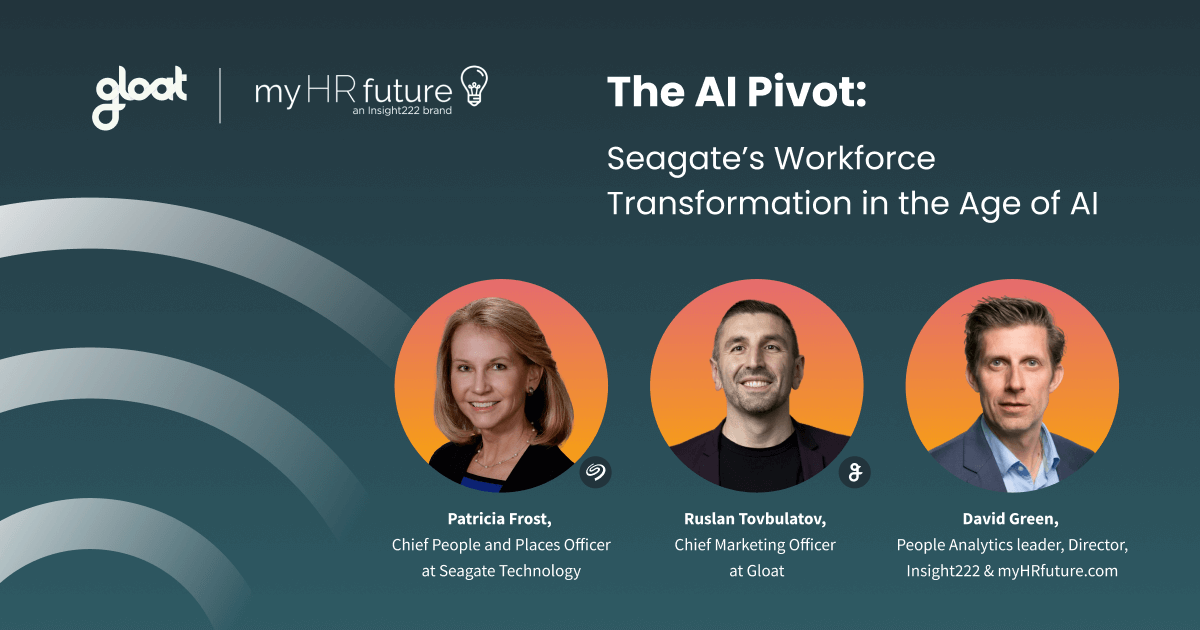What is workforce capacity planning?
Learn what it takes to empower your people to achieve their full potential

As economic forecasts darken and budgets tighten, no business can afford to leave talent untapped. With hiring freezes and lay-offs on the rise, leaders are looking to ensure that every member of their workforce can maximize their contribution to help their organization achieve its goals.
Yet it’s seldom been harder to do more with less. The burnout epidemic shows no signs of slowing down, with research from Forbes showing that 8 out of 10 workers are at risk of burnout this year, Since so many workers are already feeling the pressure, businesses can’t just keep piling on work and hoping for the best.
Instead, HR leaders must get strategic about harnessing skills and aligning employees to business priorities while keeping everyone inspired and engaged. With the right approach to workforce capacity planning, employers can empower people to achieve their full potential.
What is workforce capacity planning?
Workforce capacity planning describes the process through which an organization determines how much work can be accomplished given their total number of employees and existing or upcoming time constraints.
Capacity is frequently measured in available employee hours in the context of the organization’s total workload.
For example, a company with 10 employees who each work 40 hours per week has 400 hours of weekly capacity that can be devoted to various projects, each with their own approximate time spend.
What makes workforce capacity planning so challenging is that it requires a delicate balance between real-time employee availability, available budget, and the demand for work from customers, partners, or other stakeholders.
When done correctly, workforce capacity planning enables leaders to make informed decisions about hiring needs and reduce employee burnout.
The benefits of workforce capacity planning
Although workforce capacity planning can be difficult, companies that strike the right balance reap several game-changing benefits, including:
#1. Minimizing burnout
Often, managers aren’t aware of burnout until it’s too late. As a result, turnover rates soar, since burnt-out employees are 2.6 times more likely to be actively searching for a different job.
Rather than struggling to replace employees who were so overwhelmed they chose to resign, workforce capacity planning helps prevent burnout in the first place.
Since managers are keeping tabs on who has the time needed to take on new challenges, there’s less of a risk that employees will become overworked.
#2. Better strategic workforce planning decisions
The right approach to workforce capacity planning paves the way for better business decisions. When leaders have access to tools that enable them to identify skill gaps and pinpoint who has the knowledge and availability needed to tackle high-priority projects, they can ensure employees are working to their full potential.
#3. Saving time and money
Workforce capacity planning is always beneficial—but during periods of disruption, uncertainty, or downturn, it’s non-negotiable. It reduces turnover while minimizing the need for additional hiring and the costs associated with it.
Companies that harness workforce agility platforms to optimize capacity planning end up saving big. In fact, Schneider Electric unlocked over 200,000 hours, leading to a savings of more than $15 million in enhanced productivity and reduced recruiting expenses.
How to enhance workforce capacity planning with a workforce agility platform
Traditionally, workforce capacity planning was a tedious process. Managers needed to rely on spreadsheets, the manual sorting of multiple data sources, and a lot of assumptions to estimate what their business could reasonably achieve.
Fortunately, workforce agility platforms provide more centralized and meaningful data to drive better business decisions. Here’s how these platforms improve workforce capacity planning:
#1. Manage all skill insights in one place
Getting workforce capacity planning right requires a skills-based approach that takes into account not only the time employees have available, but also where their knowledge and expertise exist.
For a long time, it was nearly impossible for leaders to keep track of all of the skills within their workforce, especially as employees continue to build new competencies.
Workforce intelligence is built to change that. The tool provides skills insights and recommendations based on harmonized data from all the systems and sources, giving leaders the line of sight they need from one centralized location.
As a result, it’s possible to get reliable skill data to inform every workforce capacity decision.
#2. Make manual analysis a thing of the past
The days of manually keeping tabs on workforce capacity are coming to a close. Instead of managing multiple spreadsheets and searching through data from disparate sources, Workforce Intelligence equips leaders with the relevant information, trends, and recommendations needed to fuel critical business decisions.
Now, workforce planners can generate a job architecture view automatically, and see AI-fueled insights on where to merge or separate job codes, and benchmark job and skill needs within the organization and with the market.
#3. Stay one step ahead by keeping a pulse on the market
In the new world of work, do-or-die pivots and constant reinvention are the names of the game. Rather than expecting workloads to stay the same, businesses must anticipate disruption and strive to stay one step ahead of the accelerated pace of change.
Identify emerging skill trends, see what job titles are emerging, and understand how employee interest levels in different skills are fluctuating to anticipate changes.
Consequently, now that priorities are ever-changing, workforce capacity planning is no longer something to revisit once a year. Instead, businesses must keep their fingers on the pulse and embrace a dynamic approach to workforce capacity planning that evolves as demands change.
With Workforce Intelligence, leaders gain an understanding of the market value of a job, if a skill is on the rise or decline, and how the competition is positioning their jobs, giving their organization the chance to pivot ahead of the curve.
#4. Turn insight into action
Getting the right data and insights is one step of the process. But then how do you act on your findings? Workforce agility platforms enable you to take skill intelligence or job architecture changes, and make adjustments in real-time.
Workforce Intelligence tools enable planners to change job requirements, merge job codes, or prioritize skill sets across the organization.
What’s more, critical skills and roles can be elevated and promoted within a talent marketplace to encourage upskilling, allowing businesses to efficiently bridge gaps.
Now that organizations are bracing for economic headwinds, a dynamic approach to workforce capacity planning will be essential for thriving during market uncertainty. If you want to learn more about how your business can do more with less, check out how workforce agility platforms enhance agility and speed-to-market.




